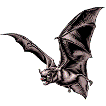Museum, University of Nebraska State

University of Nebraska State Museum: Mammalogy Papers
Document Type
Article
Date of this Version
1976
Citation
Zeitschriift für Säugetierkunde (1976) 41: 137-146.
Abstract
Biologists have long been aware of close similarities between the mammalian faunas of northern Eurasia and northern North America (Flerov 1967; Rausch 1953, 1963; Sushkin 1925; Tugarinov 1934). This similarity is particularly strong between species of tundra and taiga ecosystems (Hoffmann and Taber 1967; Hoffmann 1974). Among the species having Holarctic distributions, the boreal red-backed vole, Clethrionomys rutilus (Pallas), and the tundra vole, Microtus oeconomus (Pallas) (Rausch, op. cit.), of the subfamily Arvicolinae (= Microtinae) (Kretzoi 1962; Repenning 1968), have wide distributions in Eurasia where they inhabit, but are not restricted to, tundra (Ognev 1950; Corbet 1966). East of the Bering Strait, however, the two voles occur only in northwestern North America, and appear in some areas to have narrower habitat niches than Eurasian populations (Bee and Hall 1956; Cowan and Guiget 1956). This pattern of distribution suggests that both species are relatively recent trans-Beringian immigrants into North America from Siberia (MacPherson 1965; Rausch 1963). North American populations are now isolated from con specifics in eastern Siberia by the flooding of the Bering land bridge about 12,800 years ago as sea level rose (Hopkins 1967). Some of the differences between Alaskan and eastern Siberian populations may have arisen in this period of separation.
Published descriptions of the karyotypes of these voles permitted comparisons of gross morphology of their chromosomes. The diploid number of Microtus oeconomus (2n = 30) in Eurasia (Makino 1950; Matthey 1952) is the same as in Alaskan voles (Rausch and Rausch 1968) and the karyotypes are grossly indistinguishable. The same is true of Clethrionomys rutilus (2n = 56) in Eurasia (Makino 1952; Shimba et al. 1969) and Alaska (Rausch and Rausch 1975).
Recently it has become possible to make more detailed comparisons of chromosomal homologies, by comparing patterns of banding elicited in chromosomes by certain treatments (Caspersson et al. 1970; Arrighi and Hsu 1971). Among these, the technique of staining chromosomes with Giemsa, after treatment with trypsin (Seabright 1972) produces well-defined bands, and has been increasingly employed in studies of chromosomal homologies. Giemsa banding studies have already been made of certain Holarctic taxa; karyotypes of the Siberian long-tailed ground squirrel, Spermophilus undulatus (Pallas), and the North American S. columbianus (Ord) have been compared (Nadler et al. 1975), as have Old and New World avis (Nadler et al. 1973, 1974). Chromosomal patterns appeared quite conservative, and no major differences in patterns could be found between homologous arm segments in these taxa.
This paper describes the Giemsa band patterns of Clethrionomys rutilus from Alaska and Asia and Microtus oeconomus from several Alaskan localities. We also make comparisons with North American C. gapperi (Vigors), Eurasian C. glareolus (Schreber), and preliminary comparisons with Eurasian C. rufocanus (Sundevall).


Comments
Copyright © 1976, Paul Parey. Used by permission.